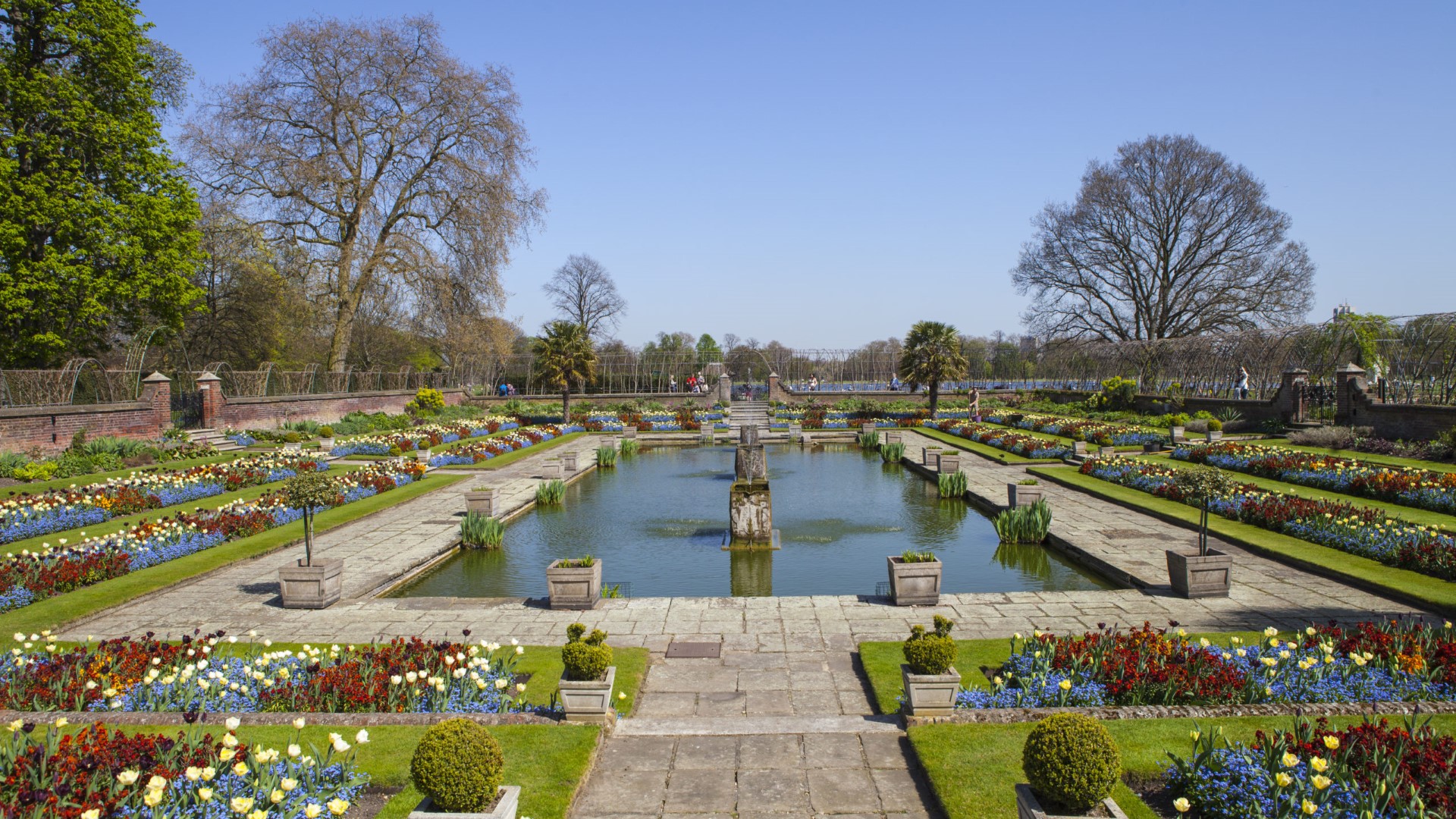Wander around Kensington Gardens
Formerly the private gardens of Kensington Palace, Kensington Gardens is one of eight royal parks open to the public and is a beautiful area to visit containing many must-see attractions.
Highlights
- Admire the breathtaking Albert Memorial, unveiled in 1872 and still one of the most ornate monuments within London.
- Peer across the Serpentine through the 6-meter-high Henry Moore sculpture, The Arch.
- Enjoy the whimsical nature of the Elfin oak, a sculpture made from the hollowed-out base of a tree with carvings of fairies, elves, and woodland animals.
What to See and Do
Info about Kensington Palace tickets →
Diana Memorial Playground
This popular playground will be loved by the kids with its central theme of Peter Pan. An impressive wooden pirate ship for the little ones to explore is the centrepiece of the playground, which is also surrounded by its beach area. The playground is designed to inspire play and to allow imaginations to soar. Teepees, play sculptures, toys, and a sensory trail all add to the fun.
Memorials and Statues
Kensington Gardens has many notable statues and memorials to admire. The stunning Albert Memorial commemorates the death of Queen Victoria’s husband, while a further statue portrays the Queen herself in her coronation robes when aged just 18. At the southern end of the park, you will find the enclosed seating area known as Queen Anne’s Alcove, while a Peter Pan statue recognises the importance of Kensington Gardens to resident JM Barrie as inspiration for his writing.
The Italian Gardens
The Italian Gardens located near the Lancaster Gate form another beautiful part of Kensington Gardens. Created in the 1860s there are four striking fountains set within octagonal-shaped ponds, as well as flower beds, urns, and statues. Prince Albert was the driving force behind the creation and when you take a look at the old pump house building on the north side of the gardens you will see his and Queen Victoria’s initials on one of the walls. One of the garden statues commemorates Edward Jenner, the inventor of the smallpox vaccine.
Serpentine Galleries
The Serpentine Galleries consist of two separate galleries within an easy 5-minute walk of each other. The galleries stage prestigious exhibitions from some of the countries finest artists. Visitors can view contemporary art from both emerging and established artists. The Serpentine gallery opened in 1970 and its location helps bring art to a broad range of visitors. Entry to the galleries continues to be free, further helping to offer access to art for all.
Kensington Palace
Once the childhood home of Queen Victoria, this elegant palace looks out over Kensington Gardens. Now the official London home of the Duke and Duchess of Cambridge, you can explore the palace and wander through the lavish State Apartments and beautiful private rooms. Royalty first moved into the palace in 1689 when King William III and Queen Mary II took up residence and visitors have the chance to walk in the footsteps of all the palace’s famous residents, including Diana, Princess of Wales who had an apartment here.
Did You Know: (5 interesting facts!)
- For over 100 years Kensington Gardens was part of Hyde Park until King William III and Queen Mary II started to create a separate park space.
- The Queen Caroline Temple proves graffiti is not a modern invention, with scribblings on the stone structure dating back as far as 1821.
- Two boundary markers within Kensington Gardens were used as tombstones by JM Barrie in Peter Pan.
- The Elfin Oak in the gardens is noted for its fairy tale carvings, yet another unusual feature is it is a grade II listed structure.
- Kensington Gardens has its allotments that are open to visitors, who can learn useful tips for growing their fruit and veg.
History
- 1689 King William and Queen Mary separated off a part of Hyde Park to use as their private gardens at Kensington Palace.
- 1702 Queen Anne adds a further 30 acres from Hyde Park and has gardens redesigned in an English country garden style.
- 1728 Queen Caroline, wife to George II, takes another 300 acres from Hyde Park as the gardens are transformed in a way similar to what we see today.
- 1860s Italian Gardens were created.
- 1872 Unveiling of the Albert Memorial.
- 1912 Bronze statue of Peter Pan was installed, and commissioned by author JM Barrie.
- 1931 Installation of the Regency-style bandstand.
- 1970 Establishment of the Serpentine Gallery.
- June 2000 Opening of the Diana, Princess of Wales’ Memorial playground.
Facilities and Accessibility
The gardens are wheelchair accessible with a number of toilet facilities situated around the perimeter areas. Those with mobility issues who may find it hard to explore all of the grounds can use the free Liberty Drives scheme, which uses electric buggies to transport people around. For people who would prefer to see Kensington Gardens on two wheels, there are cycle hire options.
Kensington Gardens has a number of cafes and kiosks offering refreshments including hot meals, sandwiches, salads, hot and cold drinks, snacks, and ice creams. One of these is the Italian Garden cafe which possesses a living roof and indoor and outdoor seating areas. The Orangery restaurant serves elegant lunches and is ideal for afternoon tea.
